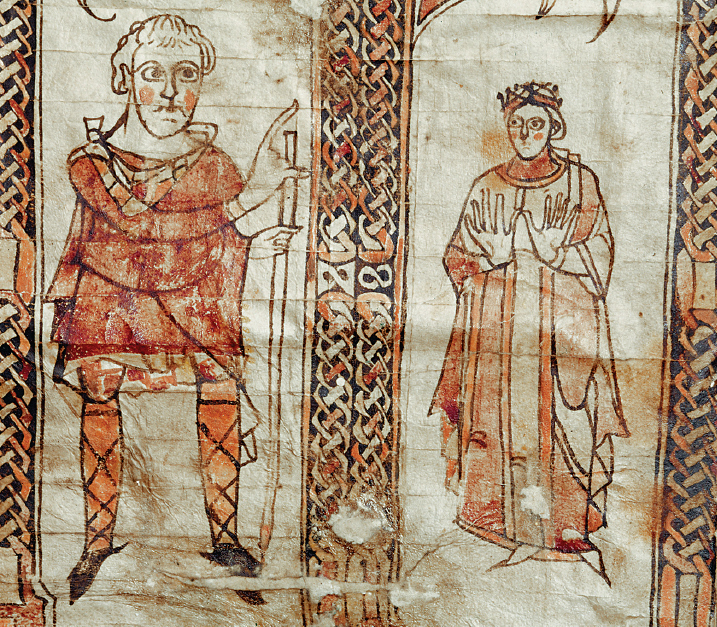Understanding Western Society
Printed Page 222
Carolingian Government and Society
Charlemagne’s empire was not a state as people today understand that term; it was a collection of peoples and clans. For administrative purposes, Charlemagne divided his entire kingdom into counties based closely on the old Merovingian civitas, each governed by a count. Counts were originally sent out from the royal court; later a person native to the region was appointed. As a link between local authorities and the central government, Charlemagne appointed officials called missi dominici (mih-
Considering the size of Charlemagne’s empire, the counts and royal agents were few and far between, and the authority of the central government was weak. In the absence of a strong central government, society was held together by alliances among powerful families, along with dependent relationships cemented by oaths promising faith and loyalty.
Family alliances were often cemented by sexual relations, including those of Charlemagne himself. Charlemagne had a total of four legal wives and six concubines. (See “Picturing the Past: Charlemagne and His Wife.“) Charlemagne’s personal desires certainly shaped his complicated relationships, but the security and continuation of his dynasty and the need for diplomatic alliances were also important motives.
In terms of social changes, the Carolingian period witnessed moderate population growth. The highest aristocrats and church officials lived well, with fine clothing and at least a few rooms heated by firewood. Male nobles hunted and managed their estates, while female nobles generally oversaw the education of their children and sometimes inherited and controlled land on their own. Craftsmen and craftswomen on manorial estates manufactured textiles, weapons, glass, and pottery, primarily for local consumption. Sometimes abbeys and manors served as markets, goods were shipped away to towns and fairs for sale, and a good deal of interregional commerce existed. In the towns, artisans and merchants produced and traded luxury goods for noble and clerical patrons. When compared with earlier Roman cities or with Muslim cities of the time, such as Córdoba and Baghdad, however, Carolingian cities were small and poor.

The modest economic expansion benefited townspeople and nobles, but it did not significantly alter the lives of most people, who continued to live in a vast rural world dotted with isolated estates and small villages. Here life was precarious. Crops could easily be wiped out by bad weather, and transporting food from other areas was impossible. People’s diets centered on grain in various forms. To this were added seasonal vegetables such as peas, cabbage, and onions, and tiny amounts of animal protein, mostly cheese. Clothing and household goods were just as simple, and houses were drafty, smoky, and often shared with animals. Work varied by the season, but at all times of the year it was physically demanding and yielded relatively little. What little there was had to be shared with landowners, who demanded their taxes and rents in the form of crops, animals, or labor.